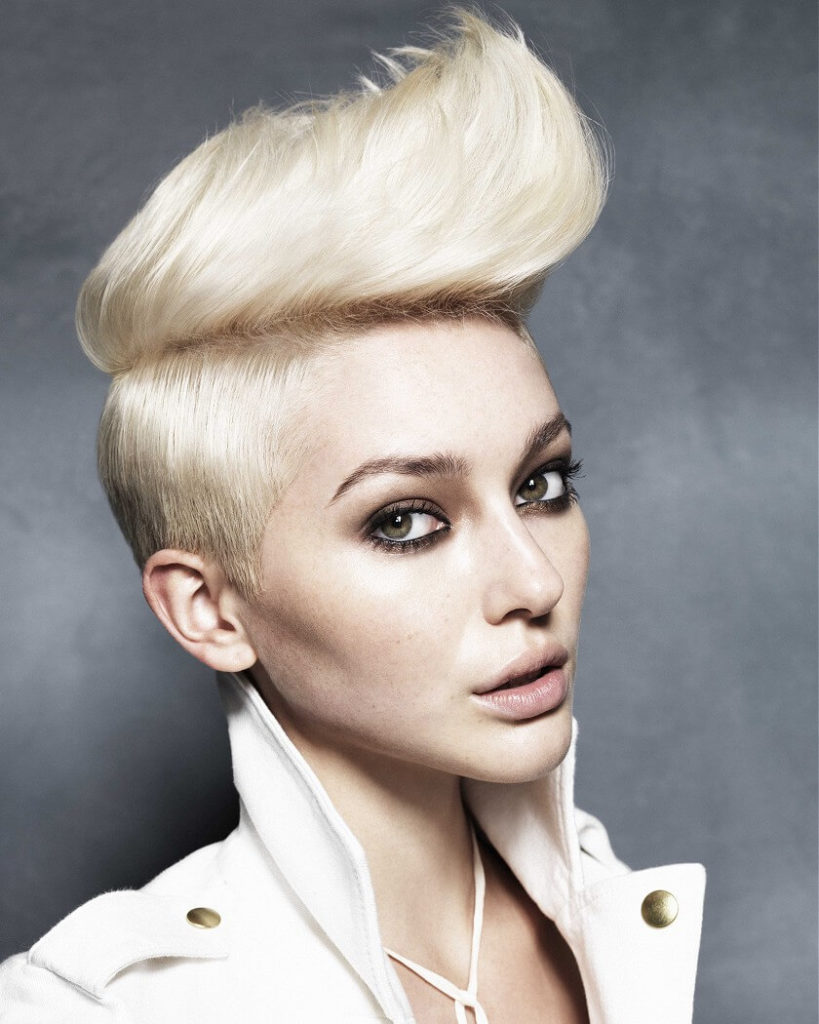

It can be created by backcombing or ratting at the roots of the hair on the sides of the pompadour towards the top of the head.

The pompadour was often supported by a roll of false hair, over which the woman's own hair was combed up and back.Īctress and World War II pin-up girl Betty Grable wearing another variant of the pompadour style, 1943Īmong women, the hairstyle became marginally popular again in the first few years of the 21st century. Variations of the pompadour style were popular for women in the late 18th century and again from the 1890s until World War I, and in the 1940s. The style has been worn by men and women in the 21st century.
#Quiff women movie
The men's version appeared in the 1950s and early 1960s, worn by early country, rock and roll and movie stars such as Elvis Presley, Johnny Cash, Chuck Berry, Ritchie Valens, James Dean, and Tony Curtis, and enjoyed a renaissance in the mid 2000s. The style was in vogue for women once again in the 1940s. In the 1925 novel The Great Gatsby, a character refers to Jay Gatsby having had a pompadour in his youth. The style was revived again in the 1890s as part of the Gibson Girl look and continued to be in vogue until World War I. Stylists had daring ideas for adding more and more height. A new, extravagant style adding again height and volume came into fashion under Louis XVI, around the 1770s and 1780s, culminating before the Revolution with the contemporaries of Marie-Antoinette. Under Louis XV, Madame de Pompadour's time, hair was worn rather low and backswept, with a simple aura of locks, and was never called a pompadour. She started wearing it like this every day to please him, and created a new hairstyle called the "Fontange", adding vertical volume to the hair. In 1680, King Louis XIV loved the way his mistress the Duchess of Fontanges arranged her hair after she fell from her horse. The name was coined in the 20th century.Īdding vertical volume on top of the head, by combing the hair back and up above the forehead, is a trend that originated in women's hairstyles of the royal court in France, first in the 1680s, and again in the second half of the 18th century, long before and after Madame de Pompadour. Although there are numerous variations of the style for men, women, and children, the basic concept is having a large volume of hair swept upwards from the face and worn high over the forehead, and sometimes upswept around the sides and back as well.ĭespite the name, this hairstyle has nothing in common with the hairstyle of Madame de Pompadour, who wore her hair back rather than up, with no extra volume on the top. The pompadour is a hairstyle named after Madame de Pompadour (1721–1764), a mistress of King Louis XV of France. Hair in this style was an essential part of the " Gibson Girl" look in the 1890s


 0 kommentar(er)
0 kommentar(er)
